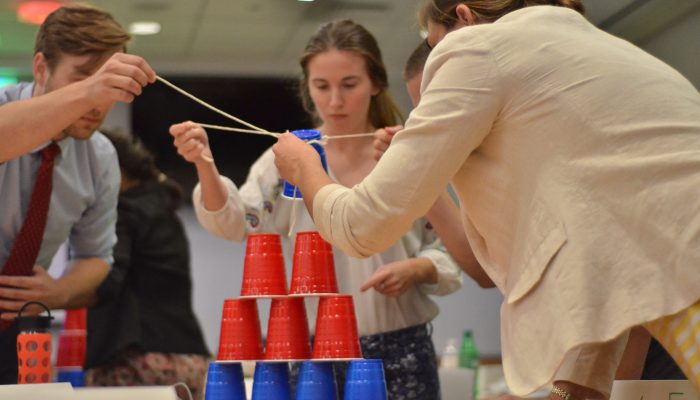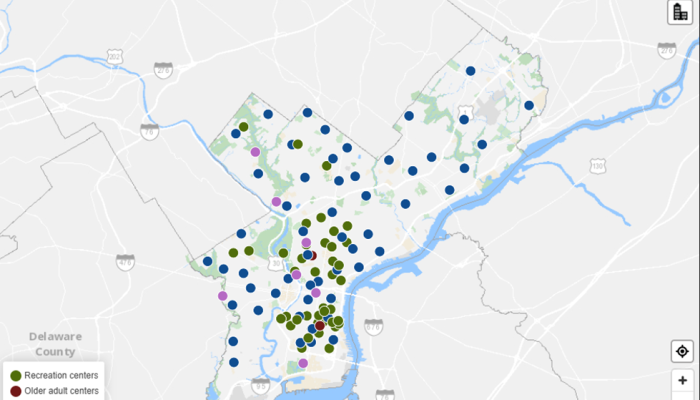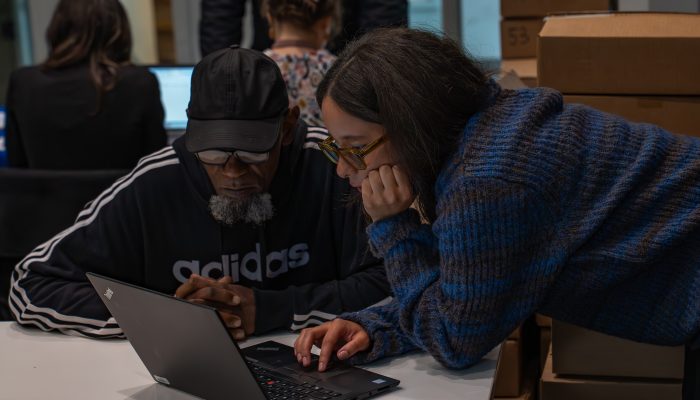Week 2: Design Thinking
Written by: Gianna Grossman, Internship Program Manager at the Office of the Chief Administrative Officer (CAO)
Tuesday afternoons are quickly becoming my favorite time of the week and this past Tuesday our “cohort of innovators” explored Design Thinking. Design Thinking has been defined as “a human-centered approach to innovation that draws from the designer’s toolkit to integrate the needs of people, the possibilities of technology, and the requirements for business success.”
As an introduction to this new way of thinking, we separated into small groups and drafted ideas to address the challenges our colleague’s shared in their problem statements (part of our application to participate in the Innovation Academy). My group worked on a problem statement centered around the City’s process. We used new tools like AEIOU, a heuristic framework, that helps users work through objective observations versus our own subjective observations; importance matrixes; and stakeholder mapping.
These new tools gave us the opportunity to think about our problem statements in new ways and the exercises greatly expanded our approach to the problem statement we were analyzing. When we began discussing succession planning, we were thinking and discussing it with a possible solution in mind, however with each activity we tried, we began to realize we needed to approach the problem statement by truly understanding the challenge and what was needed before we dove into a solution. By using a stakeholder map, we realized that there were many more people that could be affected by succession planning than we initially anticipated and we would need to expand the way we thought of the problem.
I loved learning more about the theories behind design thinking- I know I personally can rush to a solution too quickly and it was great to be given the tools to take a step back and gain a deeper understanding of a problem before I repeat that behavior. It was doubly helpful to learn that I am not the only person guilty of this behavior! We watched a video about the design of water pumps in Africa- designers had originally planned a very sleek design that looked beautiful but once design thinking was used to assess the users’ need, they completely overhauled the design! The design of the water pump was no longer sleek or beautiful, but was functional. Design thinking encouraged the designers to step back, ensure they understood the full problem, what the product would be used for and by whom, so they could create a solution that addressed everyone’s needs. Does this process of hearing a problem, coming up with a solution, and then realizing you need to step back and re-assess the issue sound familiar? It was the same way my group had approached our problem statement at the start of class. It is invaluable to be an environment where we are able to learn and use our tools in real time while also seeing the real-world application. I’m excited to see what new lessons the next week brings!
What is the Academy for Municipal Innovation?
AMI is a seven-week program that introduces participants to the principles and practice of innovation. Participants will learn to integrate tools and techniques of innovation drawn from design thinking, system thinking, business analytics, and ethnographic research to discover innovative solutions to complex real-world problems. The program will be delivered in a studio setting, anchored in Jefferson University’s (formerly Philadelphia University) signature nexus learning pedagogy of active, collaborative, and real-world learning. Each session will introduce practical techniques & tools that can be immediately applied at work to inspire innovation through collaboration.
Throughout the program, the City (Innovation Management) will offer opportunities to further develop the skills and tools that participants are learning in the classroom. Brown bag lunches, innovation consulting sessions, and workshops will take place throughout the fall to encourage students to engage with the material in the context of their everyday portfolios, and to provide them with a space to meet past graduates and learn about how they’ve integrated innovative thinking into their roles.




